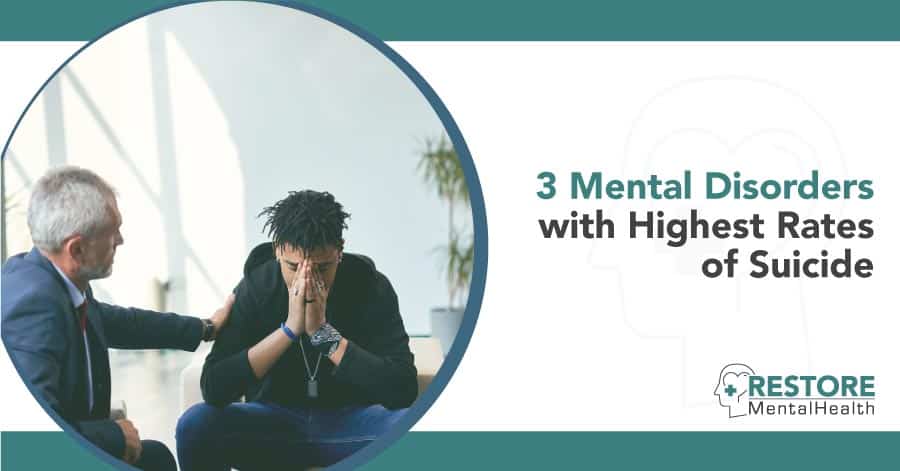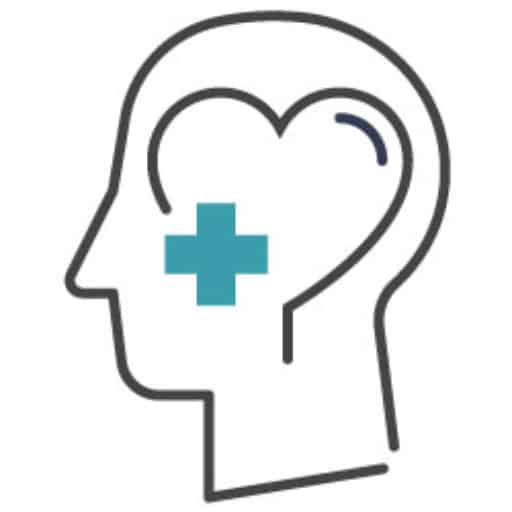Every 11 minutes, someone in the U.S. dies by suicide. In 2023, over 49,000 people died by suicide, leaving behind grieving friends and family members. Learning what causes suicidal ideation, what makes it more likely someone would consider such drastic measures, and what treatment options are available can save lives.
If you or a loved one is considering suicide, help is available 24/7 at the National Suicide Prevention Lifeline. Dial 988 to be connected with someone to talk to.
Risk Factors Associated With Increased Suicide Rates
Based on CDC data, 13.2 million adults seriously thought about suicide in 2022 while 3.8 million had a plan in place. 1.6 million of those with plans attempted suicide. Several factors can raise the risk of suicide, including socioeconomic security, where someone lives, what industry they work in, and their sexuality.
Further, some racial/ethnic groups have a disproportionately high rate of suicide. More specifically, non-Hispanic American Indian/Alaska Natives are the most likely to be impacted by suicide.
Veterans also tend to have higher rates of suicide than their civilian counterparts, as do people in rural areas. Additionally, younger people in the LGBTQ+ community tend to have higher rates of suicidal ideation. This may be due to increased rates of bullying in school and online.
Beyond external factors, internal ones can also impact a person’s tendency of suicidal ideation or attempts. Certain mental health disorders can make it more likely that someone experiences suicidal tendencies.
Mental Health Disorders That Contribute to Suicide
Suicide on its own isn’t a mental health disorder. Rather, it can be a symptom of many different mental health conditions. It’s estimated that around 60% of those who die by suicide had a mood disorder such as depression or bipolar disorder.
The mental illnesses with the highest suicide rates include psychotic disorders, bipolar disorder, substance use disorder (SUD), and depression.
Psychotic Disorders
Psychotic disorders can include conditions such as schizophrenia, paraphrenia, and delusional disorder. These mental health disorders are characterized by abnormal thinking and perceptions. Individuals with these conditions may hallucinate, meaning they sense things that aren’t real. They may see or hear something that no one else does. They may also experience delusions, which are false beliefs with no bearing in reality.
Based on a South Korean study evaluating suicide rates by mental illness, people with a psychotic disorder are at the highest risk of suicide.
What Are the Effects of Psychotic Disorders?
Psychotic disorders affect people differently, but generally include many of the the same common symptoms such as:
- Inability to express emotions
- Sudden or new tension or conflict in relationships
- Confusion
- Slow movements
- Unusual or reckless behavior
- Incoherent speech
- Loss of interest in usual activities
How Do Psychotic Disorders Affect Suicide Risk?
Research from 2019 indicate that individuals with schizophrenia are at an increased risk of suicide. More specifically, the reported rate of suicide attempts in patients with schizophrenia range between 18% and 55%. A 2005 meta-analysis showed that approximately 4.9% of people with schizophrenia commit suicide, often shortly after the illness appears.
In part, this may be due to people who are aware of their condition, fearing further mental deterioration. This risk may be increased with feelings of social isolation, hospitalization, and a lack of a social support network.
Bipolar Disorder
Bipolar disorder is classified into three types: bipolar I disorder, bipolar II disorder, and cyclothymia. This is based on the severity and frequency of symptoms as the individual cycles through depressive, manic, or hypomanic episodes.
What Are the Effects of Bipolar Disorder?
People with bipolar disorder often experience mood swings classified as manic, hypomanic, and depressive episodes. Each has their own symptoms.
Signs of a manic episode include:
- Excessive energy or happiness
- Severe mood swings
- Racing thoughts
- Restlessness
- Jumbled or rapid speech
- Impulsivity
- Inability to sleep
- Reckless behavior
Signs of a hypomanic episode tend to be milder, but typically give way to depressive episodes in those with bipolar disorder. They may include:
- Mild mood swings
- Sudden confidence
- Boosted productivity
- Feeling positive and happy
Depressive episodes may include signs such as:
- Fatigue
- Low energy
- Intense feelings of sadness
- Suicidal thoughts
- Irritability
- Insomnia
- Excessively sleeping
- Weight fluctuations due to appetite changes
How Does Bipolar Disorder Affect Suicide Risk?
Many people with bipolar disorder also experience suicidal ideation. It’s estimated that between 20% and 60% of people with bipolar disorder attempt suicide at least once during their lives. Unfortunately, studies show that approximately 20% of people with untreated bipolar disorder lose their lives to suicide. It can be especially common during depressive episodes.
Substance Use Disorder (SUD)
SUD is a mental disorder classified as being unable to handle one’s behavior around substances, including legal or illegal drugs, alcohol, and medication. The most severe form of SUD is addiction.
Approximately 16.7% of Americans ages 12 years and older struggled with a substance use disorder in 2023, according to the 2023 United States National Survey on Drug Use and Health.
What Are the Effects of Substance Use Disorder?
SUD can cause serious physical, behavioral, and psychological effects, including:
- Unexplained anxiety or paranoia
- Slurring speech
- Hiding behavior
- Excessive fatigue
- Signs of substance use, such as bloodshot eyes, pupil dilation, and intoxication
- Personality changes
- Increased anger or irritability
- Lack of motivation
- Living life around the use of the substance
How Does Substance Use Disorder Affect Suicide Risk?
Substance abuse is linked to a higher risk of suicidal ideation and attempts. More specifically, the use of alcohol and opioids are the most commonly consumed substances in those that commit suicide. Further, lower drinking age restrictions have been associated with higher rates of youth suicide.
Depression
Depression is a common mood disorder and can cause severe symptoms that affect how the person experiencing them feels and thinks. Some forms of depression are transient, like seasonal affective disorder or postpartum depression. Other forms are more pervasive, like major depression, which involves depressed moods most of the time for at least two weeks.
This condition can be caused by all sorts of factors, including physical health, traumas, genetics, and brain chemistry. It can also be exacerbated by hormonal changes, stress, and substance use. Left untreated, depressive disorders can also severely increase the risk of suicide attempts.
What Are the Effects of Depression?
Depression can make it difficult to function and complete day-to-day tasks. It’s commonly associated with symptoms such as:
- Persistent feelings of sadness or numbness
- Loss of interest in activities
- Lack of energy
- Difficulty concentrating
- Changes in appetite
- Changes in sleep habits
- Suicidal thoughts
How Does Depression Affect Suicide Risk?
Depression can leave people feeling isolated, empty, and lonely. People with this condition often feel as if they’re a burden to those around them, especially if their symptoms are particularly severe and they struggle with daily tasks. Because of this, some people with depression turn to suicide to escape the constant suffering.
Depression can severely increase the risk of suicide, especially if it goes untreated. An estimated two-thirds of those who lose their lives to suicide had depression at the time of their deaths. Further, researchers believe the lifetime risk of suicide for those with untreated depressive disorders is nearly 20%.
Help for Suicidal Thoughts
Suicidal ideation is a devastating symptom of many mental health disorders beyond those on this list. It’s important to remember that suicide is a very permanent solution to a temporary problem, and in many cases, untreated mental health issues contributes to it. Things can and will get better, especially if you reach out for help when you can no longer manage your mental health by yourself. Help is there. If you’re actively struggling with suicidal ideation and need someone to talk to immediately, reach out to the National Suicide Prevention Lifeline by dialing 988 to speak with a trained crisis counselor.
If you’re ready to start your journey to mental wellness, or if you need help supporting someone struggling with suicidal ideation, contact us today. Our trained professionals know how to guide you through the process and help you navigate your mental health disorders. Reach out to Restore Mental Health at (855) 968-0231 to get the compassionate, non-judgmental help you deserve today.



